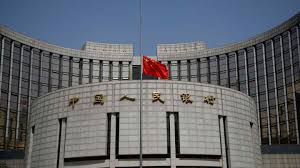
On January 20, 2025, the People's Bank of China (PBOC) announced the retention of its benchmark lending rates for the third consecutive month, a decision influenced by the ongoing depreciation of the yuan. The one-year loan prime rate (LPR) remains at 3.1%, while the five-year LPR is steady at 3.6%.
Significance of LPRs
The one-year LPR serves as a foundational rate for most new and existing loans in China, directly impacting corporate and household borrowing costs. The five-year LPR, on the other hand, is a critical reference for mortgage rates, influencing the real estate market and long-term investment decisions.
Economic Context and Policy Implications
In 2024, China's economy surpassed the government's 5% growth target, reducing the immediate need for monetary stimulus. However, the yuan's depreciation has introduced complexities in monetary policy implementation. A weaker yuan can lead to capital outflows and increased import costs, prompting the PBOC to prioritize currency stability over rate cuts.
Additionally, narrowing interest rate margins for banks limit the scope for further monetary easing. To stabilize the yuan, Chinese authorities have implemented measures such as verbal interventions and adjustments to capital flows. These actions aim to prevent excessive volatility and maintain economic equilibrium.
Investor Sentiment and Market Dynamics
Investor expectations for near-term rate cuts in China have diminished due to the weakening yuan. The inversion of the yuan interest rate swaps (IRS) curve, with short-term yields higher than long-term ones, reflects this sentiment. This inversion, the most pronounced in nearly a decade, indicates that market participants anticipate a cautious approach from the PBOC regarding rate adjustments.
Future Outlook
Looking ahead, the Chinese government has signaled a shift towards a more flexible monetary policy in 2025 to support economic growth. The Politburo has indicated plans to adopt an "appropriately loose" monetary policy, marking a departure from its stance over the past 14 years. This approach is expected to be complemented by proactive fiscal policies aimed at stimulating the economy.
However, external factors, such as potential trade tensions with the United States under President Donald Trump's administration, may influence China's economic strategies. Financial markets predict that China will allow a gradual depreciation of the yuan, approximately 5-6% by the end of the year, to counter anticipated U.S. tariffs. This measured approach aims to balance export competitiveness with the need to prevent significant capital outflows.
China's decision to maintain its benchmark lending rates reflects a strategic response to the complexities of currency depreciation and economic growth objectives. The PBOC's cautious stance underscores the delicate balance between fostering economic expansion and ensuring financial stability in a dynamic global environment.
(Source:www.marketscreener.com)
Significance of LPRs
The one-year LPR serves as a foundational rate for most new and existing loans in China, directly impacting corporate and household borrowing costs. The five-year LPR, on the other hand, is a critical reference for mortgage rates, influencing the real estate market and long-term investment decisions.
Economic Context and Policy Implications
In 2024, China's economy surpassed the government's 5% growth target, reducing the immediate need for monetary stimulus. However, the yuan's depreciation has introduced complexities in monetary policy implementation. A weaker yuan can lead to capital outflows and increased import costs, prompting the PBOC to prioritize currency stability over rate cuts.
Additionally, narrowing interest rate margins for banks limit the scope for further monetary easing. To stabilize the yuan, Chinese authorities have implemented measures such as verbal interventions and adjustments to capital flows. These actions aim to prevent excessive volatility and maintain economic equilibrium.
Investor Sentiment and Market Dynamics
Investor expectations for near-term rate cuts in China have diminished due to the weakening yuan. The inversion of the yuan interest rate swaps (IRS) curve, with short-term yields higher than long-term ones, reflects this sentiment. This inversion, the most pronounced in nearly a decade, indicates that market participants anticipate a cautious approach from the PBOC regarding rate adjustments.
Future Outlook
Looking ahead, the Chinese government has signaled a shift towards a more flexible monetary policy in 2025 to support economic growth. The Politburo has indicated plans to adopt an "appropriately loose" monetary policy, marking a departure from its stance over the past 14 years. This approach is expected to be complemented by proactive fiscal policies aimed at stimulating the economy.
However, external factors, such as potential trade tensions with the United States under President Donald Trump's administration, may influence China's economic strategies. Financial markets predict that China will allow a gradual depreciation of the yuan, approximately 5-6% by the end of the year, to counter anticipated U.S. tariffs. This measured approach aims to balance export competitiveness with the need to prevent significant capital outflows.
China's decision to maintain its benchmark lending rates reflects a strategic response to the complexities of currency depreciation and economic growth objectives. The PBOC's cautious stance underscores the delicate balance between fostering economic expansion and ensuring financial stability in a dynamic global environment.
(Source:www.marketscreener.com)





